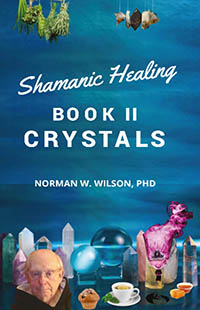
EXTRACT FOR
Shamanic Healing: Book II - Crystals
(Norman W. Wilson)
CHAPTER ONECRYSTALSINTRODUCTION Shamanism
has been around for thousands of years. The words Shamanism and Shaman are not
a part of Native American or First People of Canada languages. The word Shaman
was made popular by the late Michael J Harner and his Foundation for Shamanic
Studies. In its original language, the Tungus of Siberia, the word Shaman means
one who knows. The question is:
Knows what? A shaman knows what to use and do to help people heal themselves. Modern
healers no longer use masks, and dress in animal skins, however, some healers
in aboriginal cultures still adorn themselves. Even though the word shaman
appears to be masculine a man or woman can be a shaman. In Tungus the word for
a woman who is a healer is shamanka. Shamans
used what was available in the world of nature: medicines from trees, shrubs,
bushes, and plants. That use also included what we now call crystals. For the
early cultures, crystals were stones. Some crystal authorities still refer to
them as stones. The study of crystals
and crystal formation is called crystallography. What then, are crystals? A brief explanation of these three terms,
crystals, minerals, and rocks will be helpful. Crystals
are solids: Crystals
are solids that have an organized structure that is, they are homogeneous and have
a natural geometrically regular form with symmetrically arranged planes. There
are seven crystal systems: Cubic,
Tetragonal, Orthorhombic, Rhombohedral, Hexagonal, Monoclinic and Triclinic |

